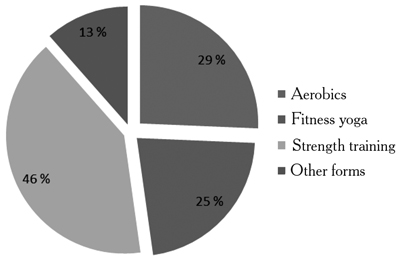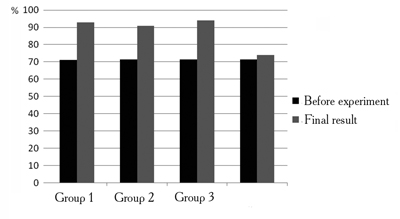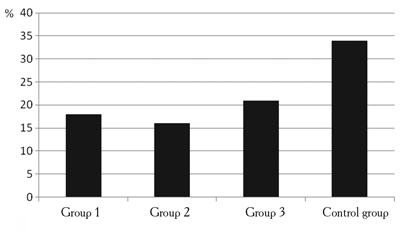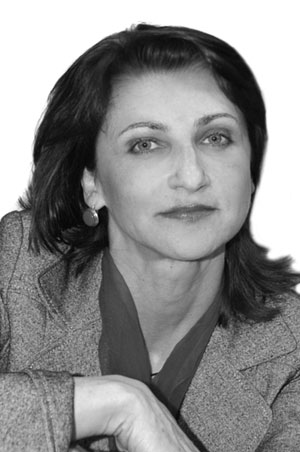Realization of Variative Component of Discipline «Physical Culture» Based on Modern Fitness Technologies
Фотографии:
ˑ:
M.V. Osychenko, associate professor, Ph.D.
V.S. Skripkin, associate professor, Ph.D.
Stavropol state agrarian university, Stavropol
Key words: educational process, variative component, fitness technologies, young students, physical fitness, health status.
Relevance. The dynamic changes currently taking place in all spheres of social life affected the higher education system too. High claims laid to young professionals on the labor market, determine their quite high intellectual potential and good health and high physical working capacity.
In modern environment, the requirements to physical education as a way to enhance physical fitness and health level of young students have increased.
Recently, the system of practical organization of physical education classes, unfortunately, did not facilitate the involvement of student’s physical training and sports activities in general, as well as improvement and promotion of students’ health. In addition, the foundation of physical fitness for the future professional activity was laid ineffectively.
The reality is that the key condition of improvement of the educational process in physical education in a university is not only teaching skills and abilities of physical training and sport activity, but also the creative development and self-expression of students in different types of physical culture.
At the present phase of development of university education it has become necessary to change the well-established physical training and sports areas and implement new effective educational technologies during mastering of the subject "Physical education", which are intended to increase the students’ motor potential activity and, consequently, effective knowledge acquisition. Thereto, one is to avoid authoritarian methods of teaching and treating a student's personality, his interests and needs in the field of physical training and sports activities [4].
As the studies of leading experts in the field of physical education have shown, the traditionally established system of physical education in non-sports universities does not meet the modern requirements (V.K. Balsevich, 2003; L.I. Lubysheva, 2002, M.Ya. Vilensky, 2004; V.I. Stolyarov, 2007, et al.) [6].
So, V.K. Balsevich and L.I. Lubysheva think that in the modern environment of university education it is particularly important to search for new effective educational methods and technologies that are designed to provide enhancement of the motor potential of the younger generation. According to them, it is necessary to keep away from the common standards in organizing and conducting classes on the subject "Physical education " [6].
Thereby, the problem of mastering the values of physical culture is defined as a socially important problem, which can be solved by developing such forms of organization of classes, which could solve in practice the problem of introducing students to physical training and sports activity.
A deterioration of health of young students has been marked in the last decade.
It is known that hypodynamia is one of the reasons for bad health of students. In this regard, in the students’ environment all body systems in the optimal functional status need to be supported. In our opinion, this problem can be solved by enhancing students' motor activity [7].
First of all, we note that before distributing students into health groups we studied the pattern of overall morbidity for 1,704 first-year students entering StSAU in the 2012/13 academic year. According to the medical examination, the share of students with health deviations is as follows: in the preliminary group - 21%, in special medical group – 17,6% of the total of first-year students; the ones exempted from classes - 2%.
In the crude incidence the largest percentage is in diseases of the cardiovascular system, the proportion of which is equal to 24,6%. Next are the diseases of the musculoskeletal system, their share is 21.8%. Eye diseases are the third in the crude incidence of the examined students - 19.4%. They are followed by diseases of the digestive system - 13.4%. The share of other diseases is as follows: diseases of kidneys and urinary tract - 6.1%, respiratory diseases - 3,1%, of ENT organs - 2.3%, diseases of the endocrine system - 4,1%, other diseases - 5,2%.
Besides, in September of the 2012/13 academic year in accordance with the section of the curriculum "Test standards" the level of physical fitness and physical development of first-year students of the main and preliminary departments was tested.
On the basis of the set of initial indices (age, body weight, height, heart rate at rest and during exercise, systolic and diastolic blood pressure) the information was obtained on the functional status and motor abilities of students, which described the level of their physical condition in general.
We have found that first-year students (47% of boys and 39.5% girls) basically have an average physical fitness level. In the study of individual indicators of the basic physical qualities it was also found that almost all indicators of physical development of first-year students are lower than the indicators stipulated by the curriculum.
Low levels of physical fitness and physical development of first-year students, as well as the high percentage of students with health deviations served the grounds for our educational experiment.
In this regard, staff of the physical education and sport department was fully used the variative course of the curriculum that enables teachers to independently determine the content of classes, optimally considering the interests and needs of students.
The purpose of the study was to design and introduce into the educational complex on physical culture of variative, innovation forms of classes based on modern fitness technologies.
Materials and methods. The experiment was based on the sports and fitness complex of Stavropol State Agrarian University on the physical education and sport department from September 2012 to May 2013.
68 of female students of the preliminary group aged 17-18 years participated in the experiment. On the basis of the monitoring three experimental groups (EG) and one control group (CG), 17 people in each, were formed.
The girls involved in the sections of interest were engaged in the experimental groups: EG-1 was engaged in fitness aerobics, EG-2 attended fitness yoga classes, EG-3 trained in a gym and in the CG female students were engaged in the standard curriculum of the discipline "Physical education".
A socio-pedagogical monitoring was conducted to identify the interests of young students to the forms of physical training and sport activity, which included:
- initial and final indicators of physical fitness among the subjects of the experiment;
- indicators of students' attendance during the experiment;
- data on absence from classes due to illness.
Results and discussion. The popularity of fitness has significantly increased in the recent years. According to the studies, fitness classes are interesting for everybody, and especially for young students [7]. During the monitoring we have found that 87% of female students of the preparatory department preferred variation forms of physical education classes, including recreational fitness. The greatest preference was given to: fitness aerobics - 28%, fitness yoga - 22%, classes in a gym - 37%, other forms of sports and recreational activities - 13% (Fig. 1).

Fig. 1. Percentage of preferences of female first-year students к формам of sports and fitness activity
Analyzing the results of the study, we see that before the onset of the experiment fitness indices of female students in three experimental groups (EG) and in the control group (CG) were approximately at the same level.
Proceeding from the conducted test, thanks to exercising in a gym with exercise bicycles, treadmills and strength training equipment students to the EG-3 managed to achieve better results in the test "100 meter running", which contributed to the development of speed. The increment of the indicators in the test "100 meter running" is as follows: EG-1 – 3,8%, EG-2 – 3,3%, EG-3 – 5,2%; CG – 3,1% (р>0,05).
The increment of the indices in the test “Dip-up” was: in EG -1 - 48,5%, EG- 2 - 65 %, EG- 3 -59.8 % ; in CG - 22 % (p < 0.05).
In the test “ABC exercises per 30 s” the increase in the indices was: in EG-1 – by 35,5%, EG-2 – by 41,8%, EG-3 – by 37,4%; in CG – by 18,3% (р<0,05).
The growth rate of the indices in the test "Flexibility" increased: in EG- 1 - by 46,7%, EG- 2 - by 54,9%, EG- 3 – by 17% ; in CG - by 16.1 % (p< 0.05).
From these data we can see that the students who attended fitness yoga classes achieved the best results in the development of strength and flexibility. Female students who attended classes in a gym and in an aerobics section, achieved the best results in the development of speed-strength qualities (P <0.05).
The findings prove that under the influence of the sport and fitness technology (fitness aerobics, fitness yoga, classes in a gym) we are suggesting the majority of the studied physical fitness characteristics are substantially qualitatively and quantitatively improved (Tab. 1).
In addition, it should be noted that attendance in all EG was much higher than in the CG, where female students, to our regret, were displeased to have to train in accordance with the standard curriculum.
Table 1. Test results for control and experimental groups before and after the experiment
|
Control exercise-tests |
Groups, n=17 |
Statistical parameters |
|||||
|
before experiment |
after experiment |
Abs. |
% |
t |
P |
||
|
M±m |
M±m |
||||||
|
100 m running, s |
EG-1 |
16,58±0,025 |
15,96±0,034 |
0,62 |
3,8 |
15,429 |
>0,05 |
|
EG-2 |
16,67±0,040 |
16,12±0,063 |
0,55 |
3,3 |
7,262 |
>0,05 |
|
|
EG-3 |
16,62±0,036 |
15,77±0,040 |
0,85 |
5,2 |
15,930 |
>0,05 |
|
|
CG |
16,60±0,043 |
16,10±0,064 |
0,5 |
3,1 |
6,577 |
>0,05 |
|
|
Dip-up, number of reps |
EG-1 |
8,353±0,226 |
12,41±0,243 |
4,05 |
48,5 |
12,221 |
<0,05 |
|
EG-2 |
8,941±0,290 |
14,76±0,202 |
5,81 |
65 |
16,471 |
<0,05 |
|
|
EG-3 |
7,944±0,228 |
12,70±0,256 |
4,75 |
59,8 |
13,873 |
<0,05 |
|
|
CG |
7,941±0,254 |
9,765±0,304 |
1,82 |
22,0 |
4,641 |
<0,05 |
|
|
ABC exercises per 30 s, number of reps |
EG-1 |
16,17±0,28 |
21,88±0,445 |
5,71 |
35,5 |
10,778 |
<0,05 |
|
EG-2 |
15,47±0,190 |
21,94±0,481 |
5,77 |
41,8 |
12,475 |
<0,05 |
|
|
EG-3 |
15,87±0,256 |
21,81±0,421 |
5,94 |
37,4 |
11,694 |
<0,05 |
|
|
CG |
16,05±0,135 |
19,00±0,284 |
2,95 |
18,3 |
9,345 |
<0,05 |
|
|
Flexibility test, cm |
EG-1 |
7,412±0,228 |
10,88±0,331 |
3,46 |
46,7 |
9,300 |
<0,05 |
|
EG-2 |
7,588±0,228 |
11,76±0,327 |
4,17 |
54,9 |
10,483 |
<0,05 |
|
|
EG-3 |
7,235±0,182 |
8,471±0,212 |
1,23 |
17 |
4,415 |
<0,05 |
|
|
CG |
6,941±0,201 |
8,059±0,135 |
1,11 |
16,1 |
4,625 |
<0,05 |
|
In the study we have found that if at the beginning of the experiment the percentage of attendance of the discipline "Physical education" was 71%, by the end of the experiment in the EG-1 the attendance rose to 93% in the EG-2 - up to 91%, in the EG-3 - 94%. The positive dynamics of students' attendance of section classes indicate the formation of stable motivation to favorite forms of physical training and sports activity. In the CG, this percentage changed slightly and amounted to 74% (Fig. 2).

Fig. 2. Percentage of attendance of female first-year students during the experiment
Female students in the sections of interests (aerobics, fitness yoga, gym) during the experiment almost were ill very seldom, while in the CG students were more frequently absent from classes due to illness. This is confirmed by the data of the medical center: EG-1 - 18%; EG-2 - 16%; EG-3 - 21%. In CG, the index was 32% (Fig. 3).

Fig. 3. Absence from classes due to illness of female first-year students during the experiment
Conclusions. The studies revealed the average or below average physical fitness level of students in the beginning of the experiment and determine the ways of its enhancement.
The system approach to organization of physical education classes, in view of the needs of physical culture and students’ interests, facilitated enhancement of the quality of education and increase students’ motor activity.
As follows from the test, the female students engaged in variative forms of classes (fitness aerobics, fitness-yoga, gym workouts), improved significantly their physical fitness indices. It is to be marked that health level, regularity of classes and physical fitness are closely related with each other.
The findings prove that variative forms of classes should be introduced into the educational process on physical culture in view of modern fitness technologies, for they not only develop physical qualities and raise the interest in classes, but are also good for health of young students.
An appropriate instrumental component of this technology (gyms, sports grounds, material and technical support, courseware) is the main condition of implementation of variative recreational forms of education.
References
- Barinov, S.Yu. The innovation system of sports education of students: teacher’s guide / S.Yu. Barinov. – Moscow: Universitetskaya kniga, 2009. – 182 P. (In Russian)
- Balsevich, V.K. Sports vector of physical education in Russian school: monograph / V.K. Balsevich. – Moscow: Teoriya i praktika fizicheskoy kultury i sporta, 2006. – 112 P. (In Russian)
- Balsevich, V.K. The new vectors of modernization of systems of mass physical education of children and teenagers in comprehensive school / V.K. Balsevich, L.I. Lubysheva [et al.] // Teoriya i praktika fizicheskoy kultury i sporta. – 2003. – № 4. – P. 56-59. (In Russian)
- Karaseva, E.N. Physical education of higher educational institutions based on the use of recreational gymnastic systems: Ph.D. thesis / E.N. Karaseva. – Moscow, 2012. – 191 P. (In Russian)
- Lubysheva, L.I. Sportization in comprehensive school / L.I. Lubysheva. – Moscow: Teoriya i praktika fizicheskoy kultury i sporta, 2009. – 168 P. (In Russian)
- Osychenko, M.V. Fitness technologies as a factor of increase of students’ motivation / M.V. Osychenko // Vestnik APK Stavopol’ya. – 2012. – № 3 (7). – P. 9-12. (In Russian)
- Osychenko, M.V. Fitness as a key component of formation of healthy way of life of young students / M.V. Osychenko // Vestnik APK Stavopol’ya. – 2012. – № 4(8). – P. 12-14. (In Russian)
- Pestova, T.G. Physical culture as a factor of socialization of student’s personality: abstract of Ph.D. thesis / T.G. Pestova. – Karachaevsk, 2004. – 24 P. (In Russian)
- Stolyarov, V.I. Theoretical basics of students’ sports culture / V.I. Stolyarov, S.Yu. Barinov. – 2nd ed., rev. and cor. – Moscow: Universitetskaya kniga, 2011. – 234 P. (In Russian)
Author’s contacts: osychenko.marina@yandex.ru



 Журнал "THEORY AND PRACTICE
Журнал "THEORY AND PRACTICE